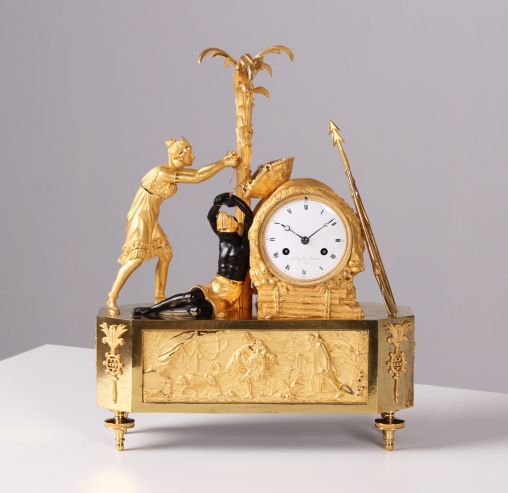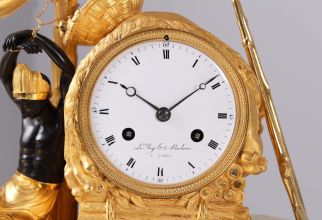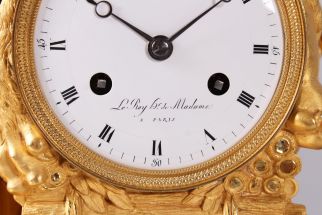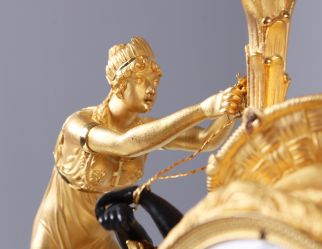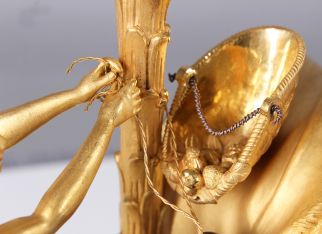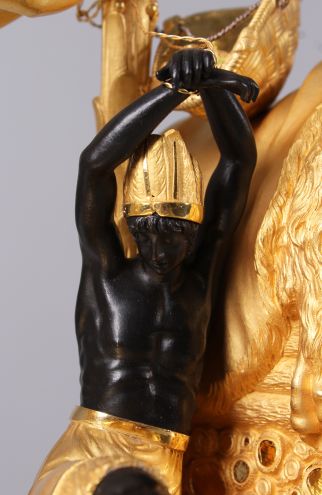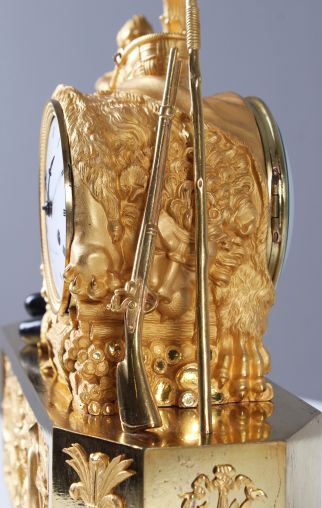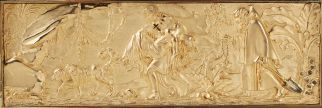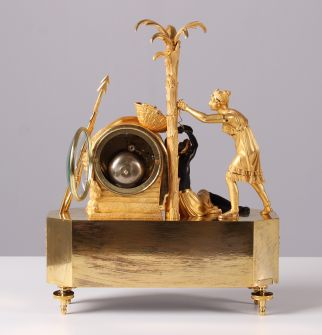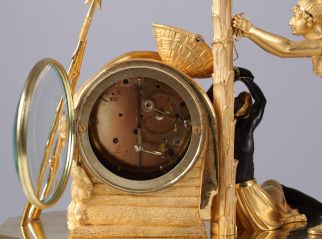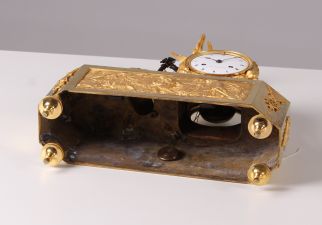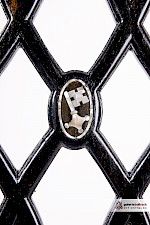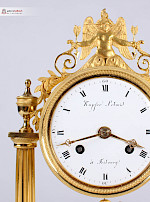Mantel Clock "Atala and Chactas"
Paris
Bronze (fire-gilt and patinated), enamel
Empire around 1810
Dimensions: H x W x D: 40 x 32 x 11 cm
Description:
Very rare and extremely high quality French mantel clock, so-called Pendule Au Bon Sauvage.
Depicted are scenes from the love story "Atala or the love of two savages in the desert" written by Francois René Vicomte de Chateaubriand in 1801. At the beginning of the 19th century, this was probably the most famous love story in Europe, but today it has been forgotten.
The story, set in present-day Louisiana (USA), is roughly rewritten about the forbidden love between Chactas, a young Indian, and Atala, the beautiful daughter of a Spaniard.
Chactas is captured in a battle between two Indian tribes, chained to a palm tree and is to be sacrificed. Atala wants to save his life and convert him to Christianity. She unties him from the palm tree at night and they flee together into the wilderness of North America. Their love for each other grows stronger and stronger and they have prospects for a future together.
The story takes a tragic turn when Atala, who must remain a virgin due to a vow made by her mother, can no longer withstand the conflict of her feelings and commits suicide.
The main group of characters thus shows the liberation of Chactas by Atala. Chactas leans tied to a pile of logs. The animal fur thrown over the logs and the weapons leaning against the stack on the right give the impression of a night camp.
The bronze is of rarely beautiful quality, finely chiselled and makes the scene appear very lively. The contrast of fire-gilded and patinated bronze adds tension to the composition.
In the base we see the Entombment as the end of the tragic love story. This bronze work is also very detailed, the interplay of bright and matt gilding makes the flat relief appear much deeper than it is.
The depiction of the pendulum presented here shows that the exotic was only known from stories and that the bronzier had his own ideas about the appearance of this distant world. The Indian, for example, has very European facial features and his skin was not black in reality, of course. The palm tree was also certainly not found in the North American wilderness.
The heart of the clock is a French pendulum movement, integrated into the wooden pile, with an eight-day power reserve and a chiming disc movement that strikes a bell on the half and full hour. The pendulum is suspended on a thread, typical of the period. The classically shaped hands, so-called Breguet hands, are also typical of the time.
The enamelled dial has black Roman hour numerals, Arabic quarter hours and bears the signature: Le Roy hr. de Madame A PARIS.
Interesting facts:
The period from 1795 to about 1815 saw the creation of probably the most spectacular group of bronzes: The "Au bon Sauvage" pendulums - depictions of the "Noble Savage".
Today's viewers react to these objects with both fascination and irritation. Enthusiastic on the one hand about the obvious quality of the detailed bronzes and the allure of the exotic, on the other hand distanced and cautious because of the possible discrimination that is suspected behind them. The ambivalence of this feeling motivates the search for the conditions of origin of these pendulums.
Europeans found their new ideal of the natural man primarily in fictional and realistic travelogues about the Indians of North America, the black Africans and the South Sea Islanders. Some of these works are still considered world literature today, think of Jonathan Swift's "Gulliver's Travels" (1726) or Daniel Defoe's "Robinson Crusoe" (1719).
[Source: Elke Niehüser - The French Bronze Clock pp. 140-143]
Condition:
Beautiful, authentic and cleaned condition of the original fire gilding, so-called ormolu, with age-typical rubbing on the back of the clock. One of the feet is old-restored, was probably once broken off and has been reattached.
The movement is completely cleaned, overhauled and runs perfectly.
Price: 16500,-€
Recommended literature on this famous pendulum:
Elke Niehüser - The French Bronze Clock p. 144
Heuer / Maurice - European Pendulum Clocks p. 79 Fig. 140
Article found under: Clocks
Add to shopping cartAlso interesting
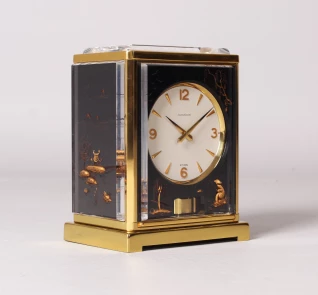
Jaeger LeCoultre - Atmos "Chinois
Switzerland
Brass, plexiglass
Year of manufacture 1965
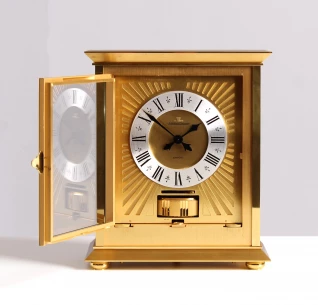
Jaeger LeCoultre - Atmos Royale
Switzerland
Gold-plated brass
Year of manufacture 1978
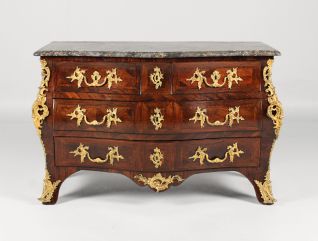
Louis XV chest of drawers - stamped COULON
Paris
Rosewood
around 1750
